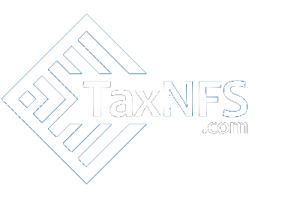PAYMENTS
 FILING BASICS
FILING BASICS- AFFORDABLE CARE ACTS
- INCOME
- WITHHOLDING
- DEPENDENTS
- CREDITS
- DEDUCTIONS
- PAYMENTS
- IRS TAX CALENDAR
- TAX TIPS
Payments
There are five methods you can use to make estimated tax payments to the Internal Revenue Service.
Electronic Federal Tax Payment System (EFTPS)
Paying by EFTPS is a fast and free way to make your estimated payments. Using EFTPS, you can input tax information over the phone and schedule payments up to 365 days in advance. EFTPS is the preferred method of making your Federal (IRS) payments. For more information on EFTPS, see http://www.eftps.gov.
Credit an Overpayment
If you have an overpayment of tax after completing your income tax return, you can apply all or part of the overpayment to estimated taxes for the current year. When applying an overpayment, the funds will be applied to payments in the order that avoids penalty for underpayment of estimated tax. If you choose to apply an overpayment to current year estimated tax, you cannot use the funds for any other reason. If all funds are not necessary to make estimated tax payments, the remainder will be refunded to you at the close of the year.
Check or Money Order
If you pay by check or money order, each payment must be accompanied by Form 1040-ES. After making the first quarter’s estimated payment, or if you made estimated tax payments in the prior year, you will receive pre-printed Form 1040-ES’s. Using the pre-printed forms when you make a payment will expedite the processing of your payments.
Electronic Funds Withdrawal
If you electronically file your tax return, you can schedule up to four estimated payments by electronic withdrawal. The funds can be withdrawn from a checking or savings account. In order to electronically file your return, the return must be prepared using a tax preparation program such as 1040.com Online Tax Preparation.
Pay by Credit or Debit Card
Tax payments and estimated tax payments can also be made using your American Express® Card, Discover® Card, MasterCard® card, Visa® card or debit card. A convenience fee will be charged each time you use a credit card to make a payment. See www.1040paytax.com.
Installment Agreements
If you cannot pay the full amount of tax you owe by the April deadline, you should still file your return by the deadline and pay as much as you can to avoid penalties and interest. You also should contact the IRS at 1-800-829-1040 to discuss your payment options. The agency may be able to provide some relief, such as a short-term extension to pay, an offer in compromise or an installment agreement.
An installment agreement allows you to pay your tax in monthly installments. To be eligible for an installment agreement, you must first file all returns that are required and be current with estimated tax payments. You can apply for an installment agreement either by completing an Online Payment Agreement or by filing Form 9465.
Online Payment Agreement
The Online Payment Agreement (OPA) is a Web-based application on IRS.gov that allows taxpayers who owe $50,000 or less in combined tax, penalties and interest to self-qualify, apply for and receive immediate notification of approval. Taxpayers can also request an installment agreement before their current tax liabilities are actually assessed by using OPA. The OPA option provides a simple and convenient way to establish an installment agreement and eliminates the need for personal interaction with the IRS and reduces paper processing.
Filing Form 9465
If you do not meet the requirements for the Online Payment Application, you may request an installment agreement by filing Form 9465. The form may be filed with your return or separately.
Offer in Compromise
An offer in compromise is a settlement with the IRS that lets you pay less than the full amount of tax that you owe. The IRS may agree to an offer in compromise if you can’t pay your taxes or if paying them would cause a significant financial hardship. The IRS will usually not accept an offer in compromise if you can pay your tax debt in full, all at once or via an installment agreement.
Making an offer in compromise requires a detailed application, which captures information about your assets, income, expenses, and future earning potential. The IRS will look at these factors to calculate your ability to pay and what a fair payment should be.
Before you submit your offer in compromise, you must:
- File all tax returns you are legally required to file.
- Make all required estimated tax payments for the current year.
- Make all required federal tax deposits for the current quarter if you are a business owner with employees.
If you’re currently going through a bankruptcy, you’re not eligible for an offer in compromise.
Penalties and interest will continue to accrue during the offer evaluation process. Nevertheless, because your total tax debt is being decreased, an offer in compromise usually still makes good financial sense.
To apply for an offer in compromise, first check the IRS’s online pre-qualification tool to see if you might be eligible.
More information, including the application and an application checklist, is provided in Form 656-B.
Estimated Payments
The federal income tax is a pay-as-you-go tax. You must pay taxes as you earn or receive income throughout the year. If you earn income that is not subject to withholding, you will likely need to make estimated tax payments each quarter of the tax year.
Tax is generally withheld from wages, salaries, pensions, unemployment compensation and other types of income before you receive it.
You can avoid making estimated tax payments by ensuring you are having enough tax withheld from these types of income before you receive it. See Form W-4 Withholding for more information.
If you owed additional tax last year, you may have to make estimated payments in for this year. You must pay estimated taxes if :
- You expect to owe at least $1,000 in tax for the current tax year, after subtracting withholdingand tax credits.
- You expect the total of your withholding and tax credits to be less than the smaller of:
- 100 percent of the tax shown on last year’s return
- 90 percent of the tax shown on this year’s return
Farmers and Fishermen
Farmers and fishermen who expect to receive at least two-thirds of their gross income from farming or fishing activities may pay estimated tax in one installment.
Income from wages received as a farm employee is not considered farm income. Gross income from farming is derived from cultivating soil or raising agricultural commodities. This income includes:
- Income from operating a dairy, stock, bee, fruit, poultry or truck farm
- Income from an orchard, range, nursery, plantation, ranch or oyster bed
- Crop shares for use of land
- Gains from sales of draft, dairy, breeding or sporting livestock
- Shares of income from a partnership or S-corporation that derives income from farming
Gross income from fishing is derived from catching, harvesting, cultivating or farming any kind of fish, crustacean, sponge, seaweed, shellfish or other form of aquatic vegetable or animal life. This income includes:
- Income for services as an officer or crew member of a fishing vessel
- Shares of income from a partnership or S-corporation that derives income from fishing
- Income for services normally performed in connection with fishing, including:
- Shore service as an officer or crew member of a fishing vessel
- Services that are ordinary and necessary for the immediate preservation of the catch, including cleaning, icing and packing
Determining Estimated Tax
To estimate the amount of tax you will owe, you must determine your expected adjusted gross income, taxable income, tax liability, deductions and credits for the current tax year.
High-Income Taxpayers
If your adjusted gross income exceeds $150,000, or $75,000 if your filing status is married filing separately, you must make payments of at least 110% of your prior-year tax liability. This rule does not apply to farmers and fishermen.
Making Payments
If you do not pay enough taxes through withholding and estimated payments, you may be subject to underpayment penalty.
The combined total withholding and estimated payments you make each quarter should be no less than 25% of either:
- 100% of the tax shown on your prior year return
- 90% of the tax shown on your current year return
- Payments should be mailed with Form 1040-ES.Payment Due DatesThe first payment is due by April 15 of the current year. The remaining three payments are due by June 15 and September 15, and then January 15 of next year. If the due date falls on a Saturday, Sunday or legal holiday, the due date is the next business day. If you do not make your estimated payments by the due date, you may be subject to penalty.For more information see IRS Publication 505.Penalties and InterestPenalties and interest apply to taxes that are not paid in full by the due date and to tax returns not filed by the due date.If you have an unpaid tax debt, penalties and interest will accrue until the debt is paid in full. Penalties and interest do not apply in years when you are entitled to a refund.
The penalty charged for filing late is generally 5% per month, up to 25% of the amount of tax due on the return.
The penalty charged for paying late is 1/2 of 1% per month, up to 25% of the total unpaid amount due.
Interest is calculated on the unpaid balance, penalties, and interest that have been charged to the tax account. While making partial payments on an unpaid balance, penalties and interest will continue to accrue on the unpaid portion, even as your debt increases due to compounded penalties and interest. The interest rate used to determine interest charges changes quarterly with federal interest rates. Interest rates can vary widely, and have recently been from 4 to 7%.
If you have tax debt that is accruing interest and penalties, you might want to consider borrowing to pay the entire debt, because interest rates on loans may be lower than the combination of penalties and interest imposed by the Internal Revenue Code. Other options to pay your debt include:
- Cash advances from a credit card
- Bank loans
- Borrowing against your 401(k), life insurance, etc.
- Using equity in real estate or other assets
If taxes are not paid and no effort is made to pay them, the IRS can ask you to take action to pay the taxes. The actions you are asked to complete may include selling or mortgaging assets. If you still do not take action after a request, the IRS may take enforced collection action, including levying bank accounts, wages or other income, or seizing your assets. A notice of Federal Tax Lien could be filed, which will harm your credit rating.
You should always contact the IRS if you are unable to pay your tax debt. In some situations the IRS is willing to offer extensions of time to pay or relief from penalties and interest. Other debt relief options include installment agreements with the IRS, or an offer in compromise. You can contact the IRS at (800) 829-1040 or by visiting a local IRS office.



